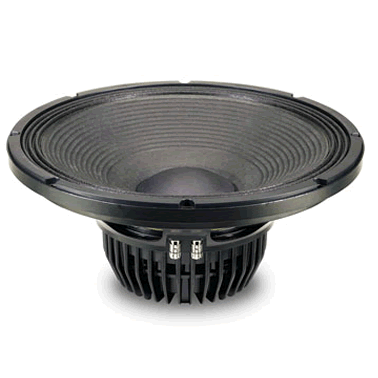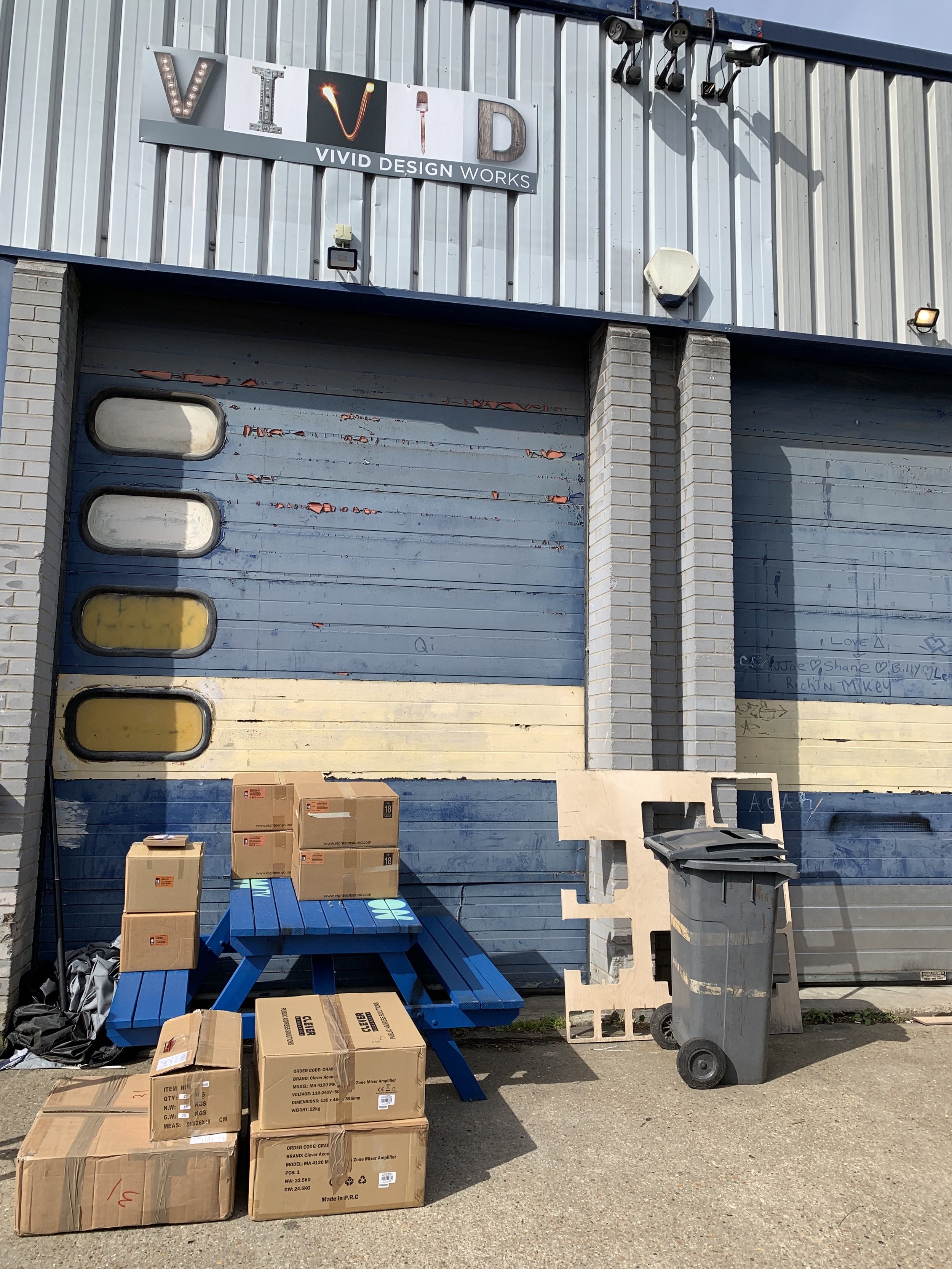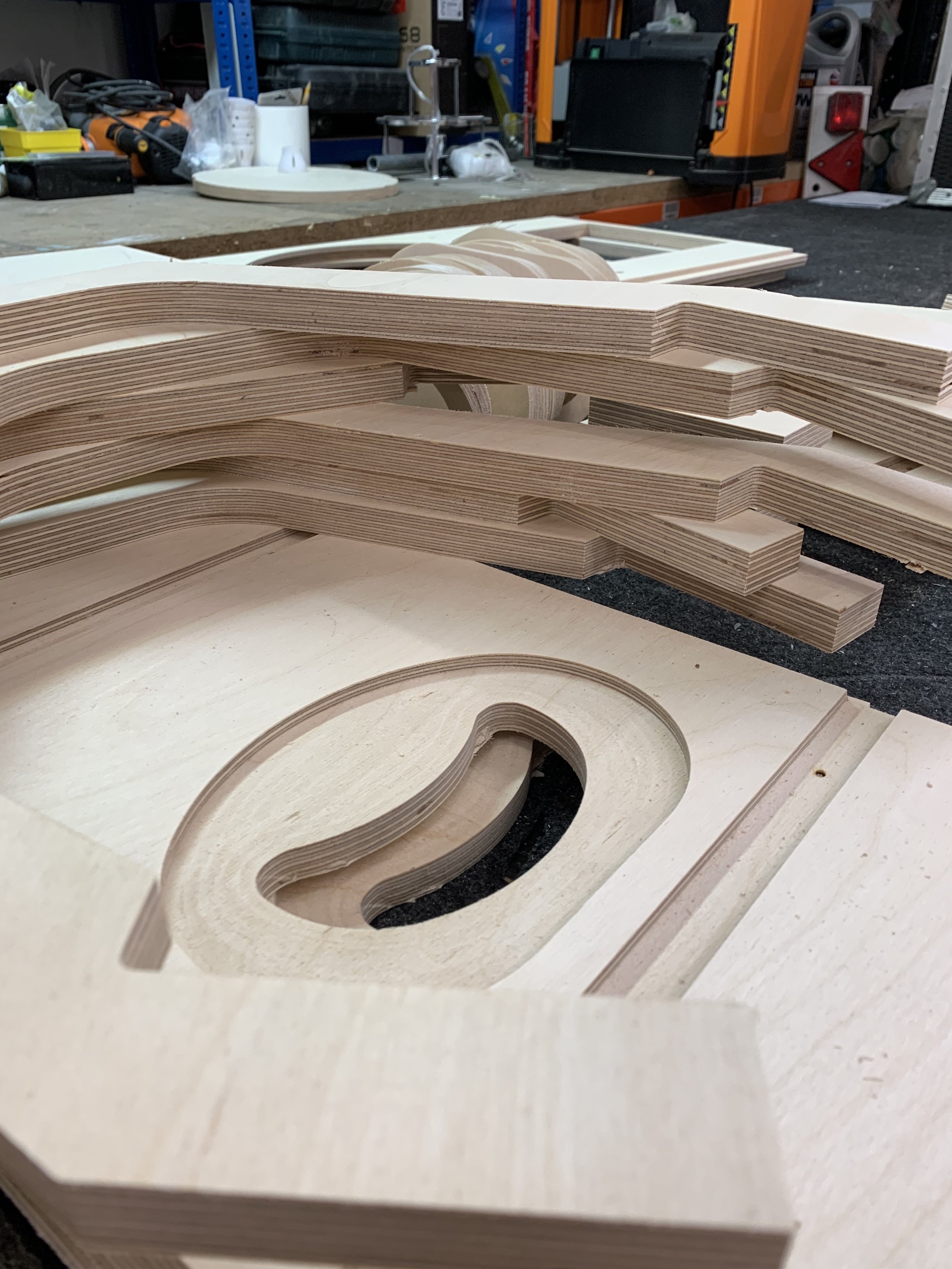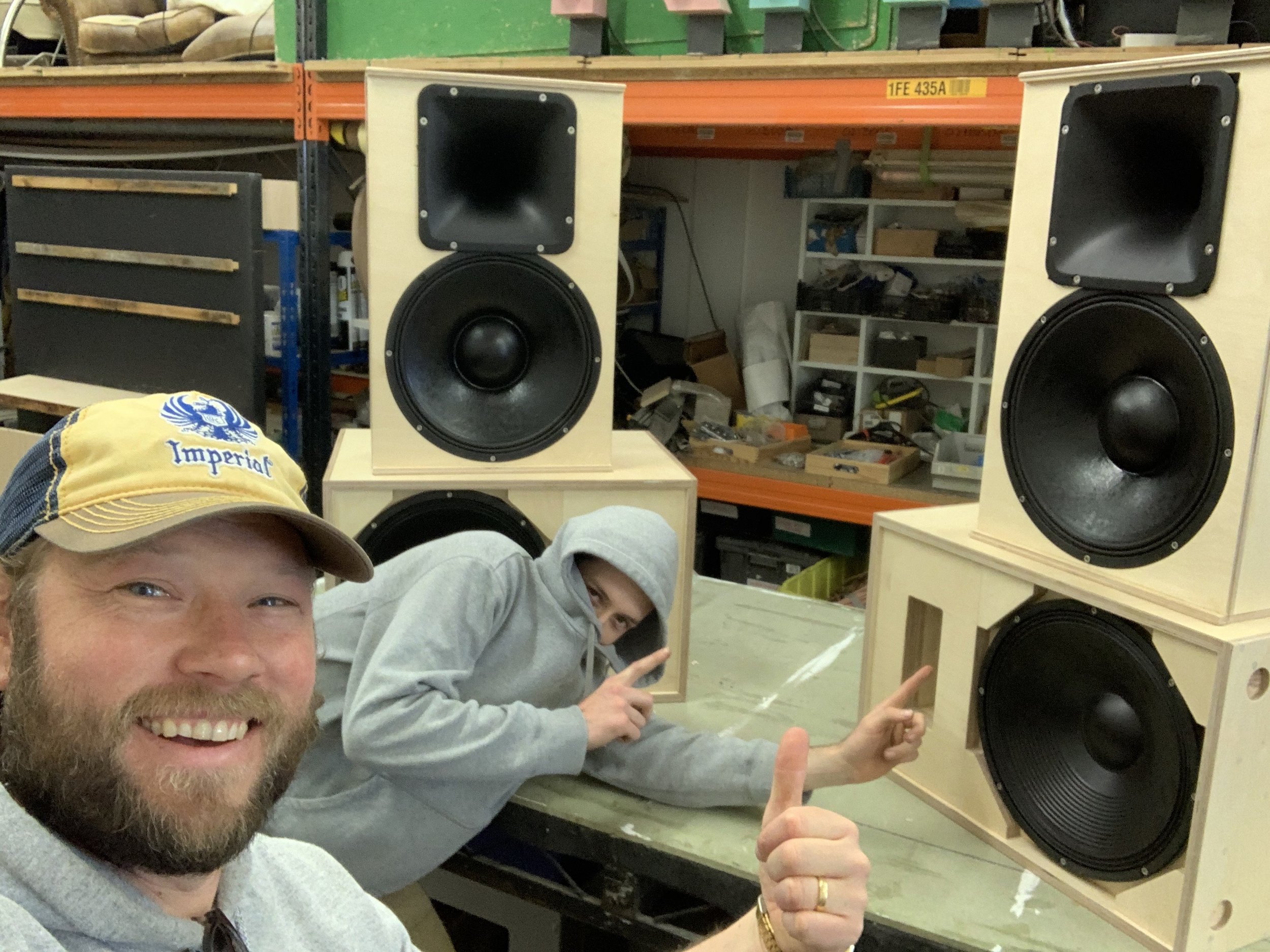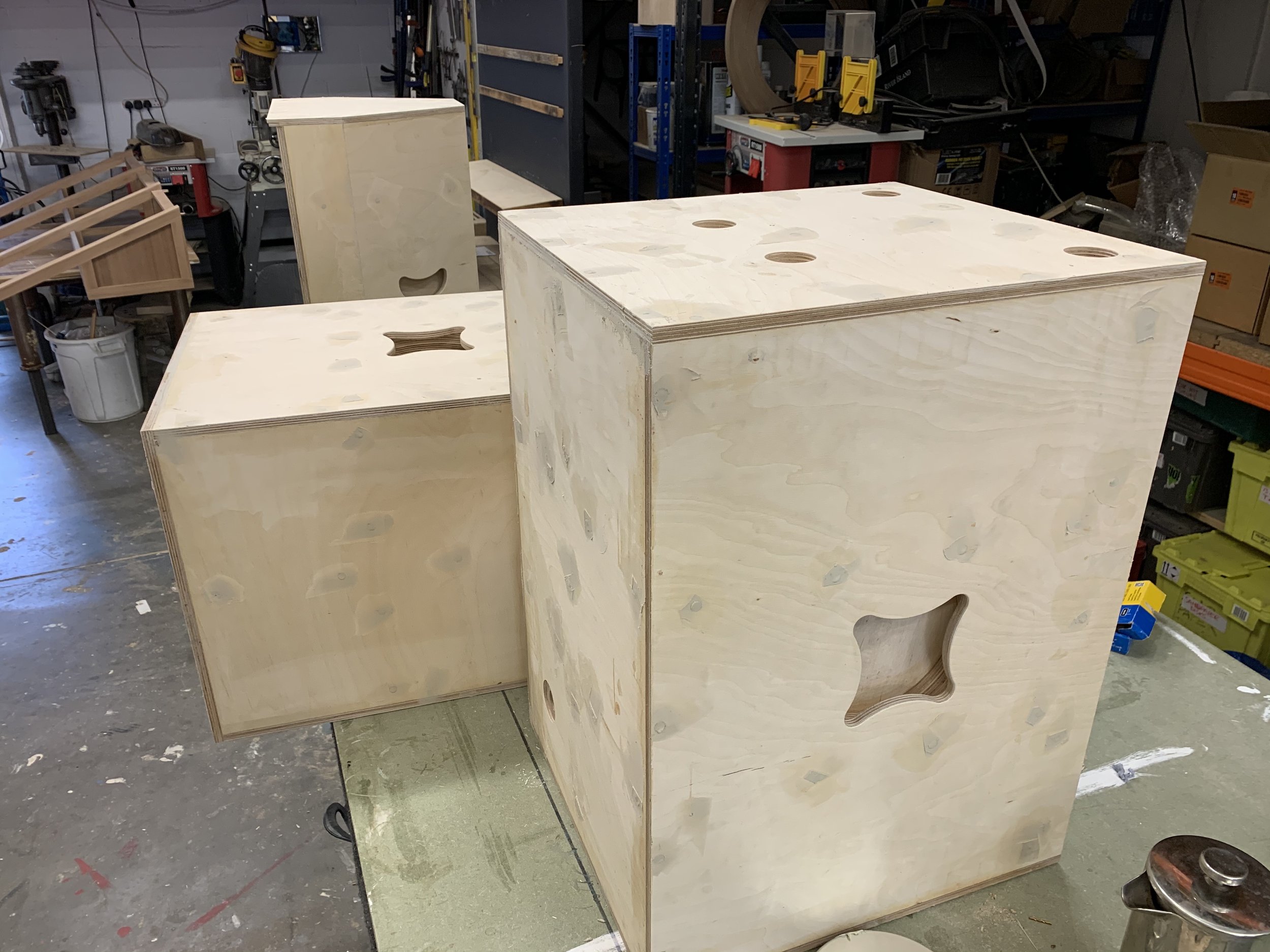Soundsystem
It begins
In 2020 I set out to build a soundsystem. I was originally inspired to do something myself by the Lemon Lounge - they are a South East London collective who focus on bass music, themselves inspired by the soundsystem culture of Notting Hill. They have become regulars at We Out Here and Brainchild festivals with their intimate round tent decorated with giant sequinned lemons.
The atmosphere they generate, the sound being designed with specific music in mind and the vintage look of the natural wood were all things I was keen to replicate, if on a slightly different scale. I got in touch with Jacob from the Lemon Lounge crew and he was happy to impart some knowledge about their process, cabinet designs and hardware. For my next step, he suggested I contact Bosco Taylor - a sound engineer and expert speaker cab designer to explore my ideas.
After a quick chat with Bosco he agreed to work with me on the project and we got to work.
The key requirements were:
High fidelity sound to represent the instruments and voices of Africa with absolute clarity
Enough power to throw dance parties for one hundred + people
No metal poles for stands (it makes me feel like I am at a conference!)
Natural wood finish
Something I could use at home as well as out and about
Needs to fit in my 2010 Nissan X-Trail!
Design
We designed a set of 4 passive speakers (which means they need to be paired with an amplifier), 2 bass bins and 2 mid-tops. Because of the requirement for the system to fit in my car we went for 15 inch drivers for the mids, and 15 inch drivers for the bass bins.
If the bass bins had been built with 18 inch drivers they would have been very hard to move on my own and would not have fit in the car. The result of this would be a sound profile more focussed on the mid-range which would emphasise instruments and voices (which was one of my priorities when setting out) more than the sub-bass (which is a priority for soundsystems like Lemon Lounge).
For the bass bins Bosco designed reflex cabs (has a port of vent through which some of the sound passes to enhance the low end). Combination of the ported design plus the 15 inch cabs (as opposed to 18 inch drivers) gives it a good low end while being more portable.
The mid-top designs are also ported, with 15 inch mid-range drivers plus 1.4 inch compressions drivers. The port again serves to enhance the low-end which will help when I use the mid-tops only without the bass bins. The ‘horns’ in the mid-top are there to enhance the sound and to ensure a wide distribution of the sound. They are also INCREDIBLY heavy at 1.9kgs each!
Nigel from Lean Business provided me with a top-notch service. I had originally ordered the 18 sound mid and bass drivers alongside an RCF ND850 1.4 110 Watts compression driver. However, as Nigel is the UK distributor for 18 sound he offered me an upgrade to the 18 Sound NSD1480N 8ohm 1.4" 100 watt NEO HF which I was very grateful of at the time, and even more grateful now that I can appreciate the impact of the full set of 18 Sound drivers.
Hardware
Components:
Amp with built-in - FFA 4004
Amp for compression drivers - Originally a Matrix GT800 FX > upgraded more recently to Lab Gruppen / Martin Audio MA900
Compression Drivers (tweeters) - 18 Sound NSD1480N 8ohm 1.4" 100 watt NEO HF Compression Driver
Mid Drivers - 18 Sound15NMB420 8ohm 450watt High Output MB Neodymium Driver
Bass Drivers - 18 Sound 15NLW9300 8ohm 15" 800watt Extended LF Neo Driver
Horn - 18 Sound XR1464C Constant Coverage HF Horn (1.4" Throat)
Build
Once the designs were completed, we booked a weekend at Vivid Studios to build the speakers. We used 18 mm birch ply throughout and the wood for the cabs was cut before we arrived on a CNC machine so we could get straight to the ‘glue and screw’ process straight away. With one of the team from Vivid Studios supporting alongside Bosco, the build was a dream - they had the tools and the experience to ensure that the process was stress-free and it all came together nicely.
In three days we were able to put the cabs together, apply the finish, fit the drivers and give them a test to start tuning the sound. I went away from the weekend with my very own system, in full working order and ready to party. My homework when I left was to build and finish the stands..
Stands Design and Build
Bass frequencies are more omni-directional and high frequencies are more directional. What that means when you are designing a soundsystem is that the drivers delivering the high frequencies need to be above head height so that everyone in the crowd get the full spectrum of frequencies. However, as I said above I didn’t want metal poles to raise the mid-top cab and the Vivid team had built wooden stands before so we settled on that.
The CNC engineer had recently acquired some AI software that he was keen to try out so we got to work. The software was able to apply a ‘load’ to the material and then calculate which material could be removed whilst retaining enough strength to carry the weight of the cabs. We experimented with a few settings, changing the parameters to see how they impacted the results. The main variable we used was the minimum width of the material to create the right balance between durability and the overall aesthetic.
The result was amazing - we managed to create a really organic look to the material, a bit like the roots of an old tree, which was surprising as it was designed by an AI software. They also cut the Mother of Mankind logo into the middle section of the stand to finish the design.
Finishing
To finish the cabs I used a clear hard wax oil - a natural oil which is easy to apply, shows off the natural grain of the wood, and creates a strong protective finish.
When I came to finishing the stands, it was VERY labour intensive - sanding all of the edges of the intricate design took a long time but I was really happy with the result. I used a darker ‘oak’ finish for the stands which I prefer to the clear finish and plan to finish the cabs to match in 2023.
Speaker Grills
The final stage was to get some grills made. Grills are used to protect the drivers from being damaged and I had them made to order by Mark by Speakergrills. They are made from unpainted raw steel and they fit like a glove when they arrived. The mid-top grills which turn the corner popped straight on and stayed in place on their own, but I put bolts through to hold them all in place.
And with that I had created a soundsystem. When I listen to it at home I have experienced music which is familiar to me in a new way, with a different clarity, depth and warmth than before. When I take it out and about I have had lots of great comments both from DJs who love playing on it, and from dancers who find themselves carried away with the music. I find it most interesting when people say that they have never even thought about how sound is different from different systems but they noticed something different about the Mother of Mankind system.
What’s Next
This is a journey that I am on with the system - I have been making some tweaks along the way, like upgrading the amp for the compression drivers, and my next job is to sand the cabs back, route the sharp edges, and re-finish in the ‘Oak’ coloured hard wax oil. Watch the blog for updates!





